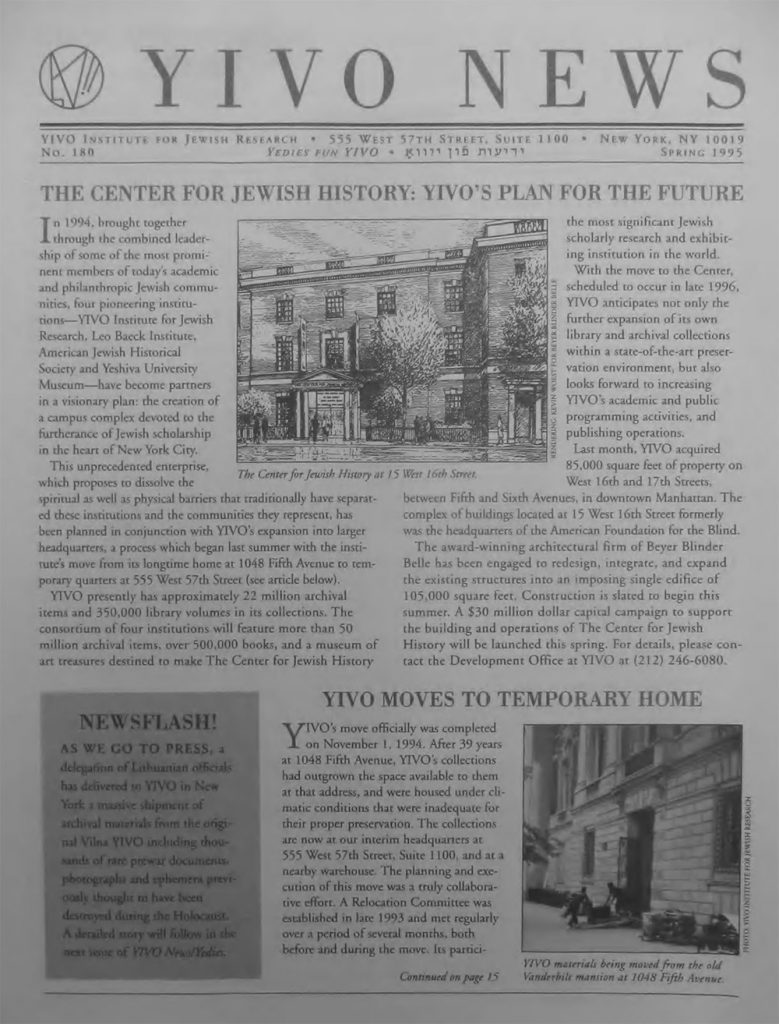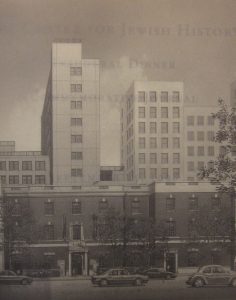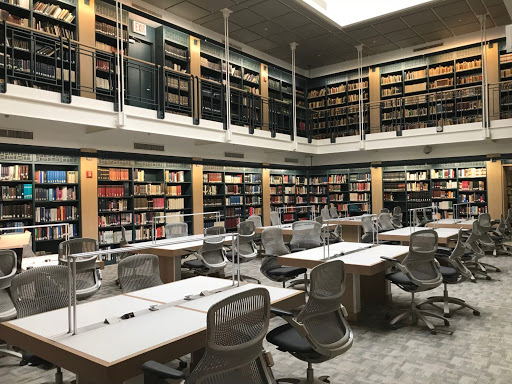The Center for Jewish History (CJH) was formed in 1995 as a partnership between five major American Jewish archival institutions: The American Jewish Historical Society (AJHS), the Leo Baeck Institute (LBI), the YIVO Institute for Jewish Research, the American Sephardi Federation, and the Yeshiva University Museum. It opened in 2000 for research and public exhibitions and events.

The CJH was initially envisioned in the early 1990s as a joint “research campus” for YIVO and the Leo Baeck Institute, both of which were seeking new buildings at the time. They were shortly joined by the AJHS, which at the time was headquartered in Boston, and the other partner institutions.

The idea of a central research institution had long roots; in the 1950s the National Conference of Jewish Communal Service tried to bring together YIVO and the AJHS in a similar fashion. 40 years later, circumstances brought these groups together again at a time when all of these groups were seeking new ways to reach their constituencies, as well as financial and logistical circumstances. LBI and YIVO determined that with the sale of their historic buildings, particularly YIVO’s Fifth Avenue location, they could purchase a more spacious space downtown and provide for modern offices, storage space, and research facilities that would be mutually beneficial to the groups. They were thus able to purchase buildings both on W. 16th and 17th streets, breaking down the walls and creating a giant complex that would provide both both space for research as well as expansive stacks.

The Center was developed as a partnership, but ultimately the groups have remained independent. This is reflected in the “layer cake” model for the building, where each of the partners has their own floor. There is a single reading room where scholars can conduct their research and unified search engine (OPAC) can view collections side-by-side. For many years, YIVO had their own library staff in the reading room and distinctive rules on research photography, but in recent years there has been a fully joint library staff on site.
The Center for Jewish History is one of the premiere locations in the United States for research in Jewish history due to the fact that it brings together such significant collections under one roof, even if they are technically independent. It brings together both general historical materials as well as genealogical resources, and the CJH event space also allows for it to be a major center of public historical activities and programs, with each partner institution having a rich slate of programming.
The CJH has a number of fellowships for scholars to come do research.
Research Details
The Center for Jewish History is located near Union Square in New York City, and is easily accessible from numerous subway and bus lines, as well as New Jersey Transit.
Researchers should expect to pass through security, and visitors proceed to a reception desk to get a photo pass (which needs to be re-printed on every visit). There is also a coat check area where scholars can leave bags, which are not allowed in the reading room.

Research is conducted in the Lillian Goldman Reading Room, which is accessible via the elevator. There are usually excellent exhibitions outside the reading room, curated by the different partner institutions. The reading room is adjoined by a foyer and conference room that allows researchers to converse and meet without bothering other visitors.
Scholars request materials online through the joint catalogue, and pick up and return them at a central reference desk in the main reading room.
Each of the partner institutions has specific rules regarding photography and duplication.
There are a number of microfilm readers, which are very useful as much of the collection is available via microfilm.
Further Reading
- Jason Lustig, A Time to Gather: Archives and the Control of Jewish Culture (Oxford University Press, 2021), chapter 6
- Jason Lustig. “Building a Home for the Past: Archives and the Geography of American Jewish History.” American Jewish History 102, no. 3 (2018): 375–99.
- Richard F. Shepard, “Archives of Jewish History, Now Under One Roof.” The New York Times, April 28, 1997.